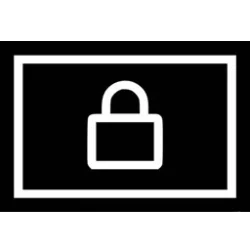Thank you. I have read the link and unfortunately there is nothing in it that actually describes how to create a proper AppPassword. I have 2-step verification everywhere so that's not an issue...If you want to use a POP Gmail account in Outlook 365, then you must use a Google generated app password as your account password when configuring the account. See this link.
All text in red is from the link: Outlook and Gmail's Less Secure Apps Setting
Error Messages
Task 'user@gmail.com - Receiving' reported error (0x800CCC92): 'Your email server rejected your login. Verify your username and password for this account in Account Settings. The server responded: -ERR [AUTH] Username and password not accepted."
If you have the account added as POP and receive this error, you need to use an app password to sign in. If you do not have two-step verification enabled, you will need to enable it to create an app password.
I have never encounted this error.
Two-Step Verification
Older versions of Outlook can't connect to Gmail servers unless you also enable two-factor authorization then use an app password in Outlook. (The app password is a one-time use password that can be voided if you suspect it is compromised, without affecting your “real” password.)
To check or change your settings, sign in to Gmail then open your Google account settings.
If you enable two-factor authentication, you'll create new app passwords at App passwords. Gmail allows you to revoke individual app passwords, which you can do by clicking the trash can icon to the right of the device name...
In my experience with Gmail, their implementation of two-factor authorization is not annoying at all and retains the authorization. It doesn't request re-authorization often, which makes using an app password fairly painless.
(garyb01225, my "Thank You" for sending this link, still applies) Aside from having text that is totally incomprehensible --signified by being colored green. The link supplies no information about how to actually construct (is "construct" the proper word?) an AppPassword.)
Good for you. I have asked for advice. I've been given it by multiple people and I've taken their advice and reported back as to the results of doing that.I have 5 email providers setup in my Outlook that require and use AppPasswords, they NEED to be used or you'l not get any mail traffic.
You came here to ask for advice, you've been given it by multiple people yet you know enough to argue with them all, why haven't you solved your problem yet do you think?
One person repeatedly suggested (actually twice) I drop POP3 and adopt IMAP. I respect his opinion and choice but disagree with him, saying my situation and preference is different and more appropriately requires POP3 email.
As regards the rest of the people: NONE of their advice had anything to do with AppPasswords, except to present to me links through which I might learn something about AppPasswords (i.e., garyb01225).
Consulting the material suggested, those links made absolutely no sense to a rational person trying to actually create a link that relates to SOMETHING.
You, on the other hand, seem to have succeeded in implementing 5 email accounts, using AppPasswords, and successfully used those email accounts ever since. (Incidentally, I used POP accounts without AppPasswords, for the last 20 years and continue to use them on other computers to this day.)
I would be more than happy to try your method of setting up AppPasswords (after all I only need to do it to two email accounts, not five) if you would consent to tell me how it is done.
Listen...I have more important things to do that pander to misbehaving computers. I'm not particularly happy complaining on this forum about Microsoft and/or Google-related problems (and if you stop to think about it those are the two companies from which most Windows computer problems come, not "bugs", mind you, but actually, defined and enforced, problems.) come.
There's a lot I know, and a lot I don't. I've been very honest about what I don't know and have tried every solution suggested. If you have fault with what I have done, politely suggest how, step-by-step, I might correct it. Don't just complain that the problem hasn't been solved.
Last edited:
My Computers
System One System Two
-
- OS
- Win11 Home
- Computer type
- Laptop
- Manufacturer/Model
- Dell Inc. Inspiron 16 7610
- CPU
- Dell Inc. 0FHWFD A01
- Motherboard
- Dell Inc. 0FHWFD A01
- Memory
- 16GB
- Graphics Card(s)
- 2.30 gigahertz Intel 11th Gen Core i7-11800H
- Sound Card
- Intel® Smart Sound Technology for USB Audio
- Monitor(s) Displays
- laptop (small) and 1 or 2 external monitors
- Screen Resolution
- -
- Hard Drives
- PC711 NVMe SK hynix 1TB 1.02 TB NVMe ANB2N582412102F0G_0001
- PSU
- -
- Case
- Laptop
- Cooling
- fan
- Keyboard
- External!
- Mouse
- External
- Internet Speed
- -
- Browser
- Chrome (Chrome profiles), Firefox (Bookmark Search Plus2), Edge (History page), Opera (annoying)
- Antivirus
- WinDefender
- Other Info
- Win11 Home 23H2 22631.3447
-
- Operating System
- Win10
- Computer type
- PC/Desktop
- Manufacturer/Model
- self
- Motherboard
- Gigabyte B75M-D3H
- Memory
- 8068 MB Usable Installed Memory
- Graphics card(s)
- 2.30 gigahertz Intel 11th Gen Core i7-11800H
- Sound Card
- Intel® Smart Sound Technology for USB Audio
- Monitor(s) Displays
- 3 Displays
- Screen Resolution
- n/a
- Hard Drives
- SSD and others (internal and external)
- Case
- Desktop
- Cooling
- Fan
- Mouse
- External
- Keyboard
- External
- Browser
- Chrome, Firefox, Tor, Brave, Opera, etc.
- Antivirus
- Win Defender
- Other Info
- Win10 & unfortunately OneDrive: Can't completely rid myself of this!!
















